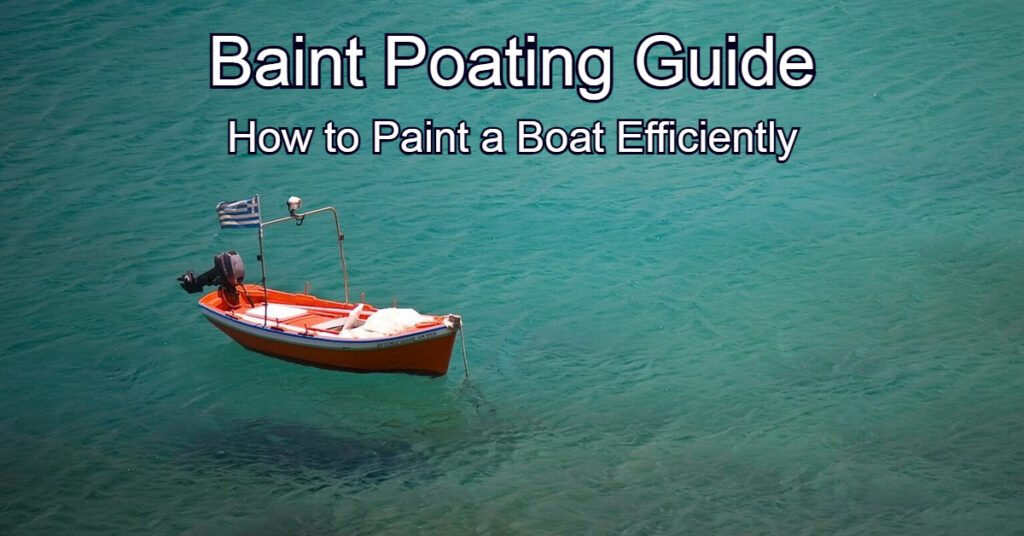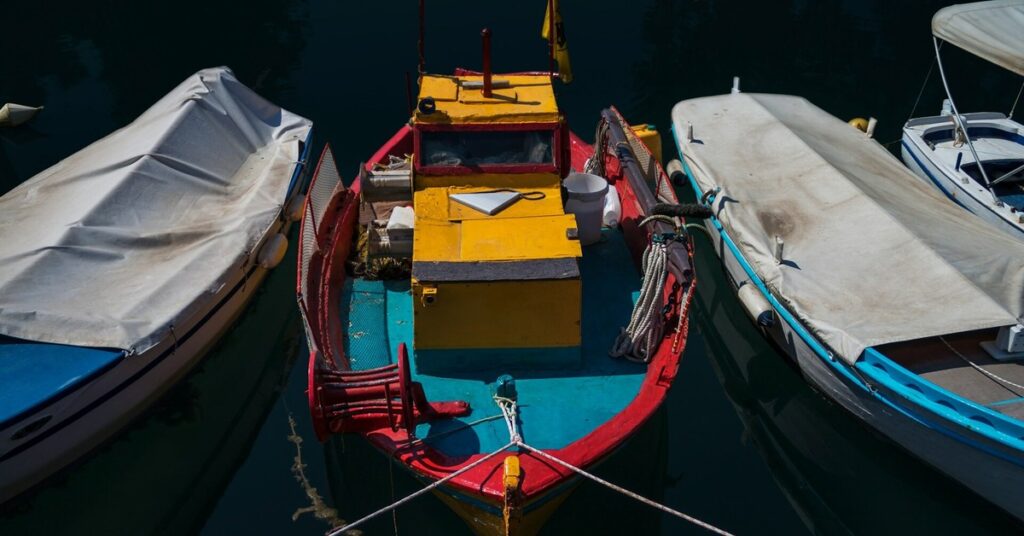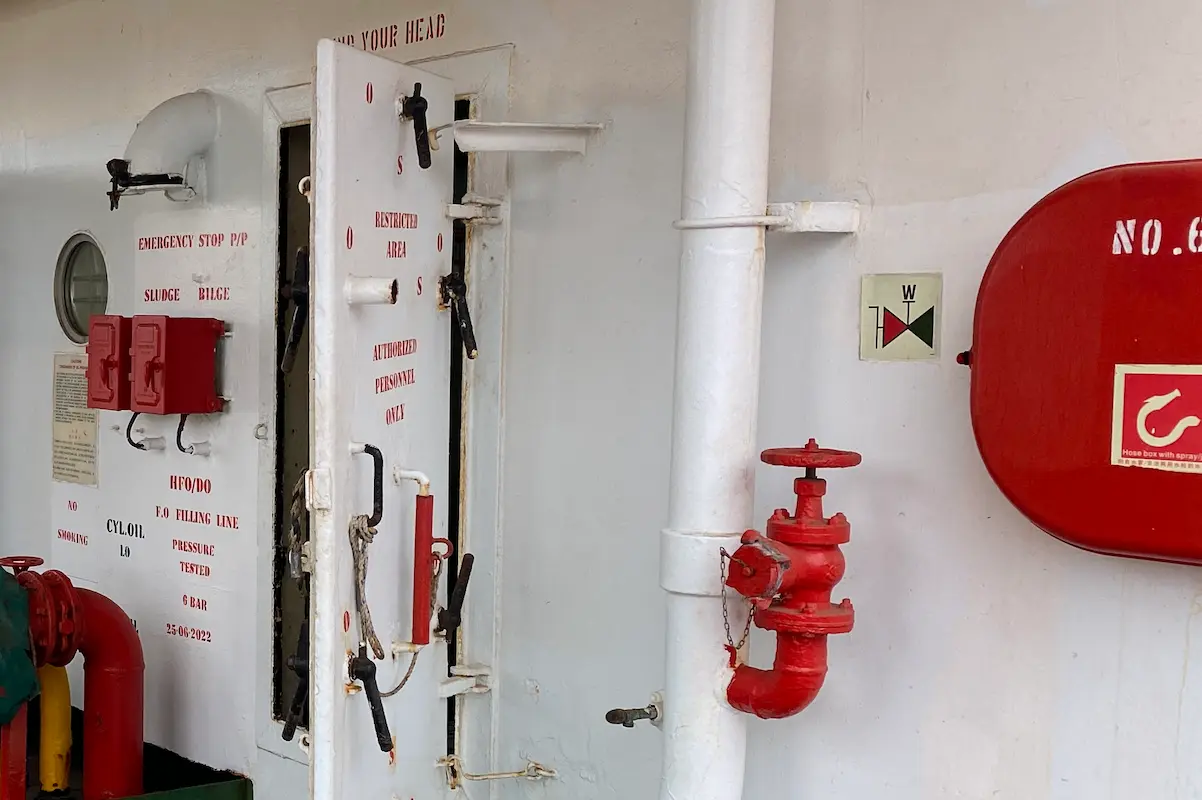When viewing a boat, most people comment on size and design. However, one of the most underrated factors is its paint. Any enthusiast can tell how well-maintained a vessel is based on its paintwork.
Interested in learning how to paint a boat? Painting a boat can be a meticulous process, quite different from a house or any other structure. It has to be tailored for water transportation and extreme weather conditions.

Why Boats Need Paint
People paint their boats for many reasons, and appeal plays quite a big part. If a person wants to make even a regular fishing boat more upscale, color is one of the simplest ways to upgrade its appearance. Some enthusiasts also have an innate desire to personalize their vessel with a color of their choice.
Regarding functionality, boats need paint to deter the marine life under them. Whether the vessel is at a standstill or sailing, various aquatic organisms like barnacles can stick to and damage the bottom of the ship. Fish can also rush to the boat out of curiosity. The paint acts as a layer of protection between the watercraft’s material and the damage it creates.
That said, it’s essential to be wary of what boat paint one will use. Boat paint is mandated to ensure it’s safe for the marine ecosystem. Some marine growth is more prominent in saltwater than freshwater, which calls for better antifouling measures.
For example, the Washington government bans tints containing copper and other similar toxic ingredients since they are harmful to fish and the environment. Irgarol or cybutryne was banned as well in 2023.
Other Considerations with Painting Boats
Painting boats requires some thought. For instance, the color of a boat can affect its overall discernibility. Unlike submarines painted black for camouflage, boats should be visible on the water. White and lighter colors are ideal since they can be easily spotted. Adding other hues can make a vessel even more identifiable in a dock full of vessels.
Moisture resistance is another crucial aspect of painting boats. Unlike other objects on land, boats are always exposed to water when they are in use. Ocean water contains weak acids that make the pH scale different from drinking water. Less durable colorants will wear off quickly compared to actual marine paint.
There’s also the matter of pricing and location. Boat painting can amount anywhere from $400 to $10,000, depending on boat size and dye quality. Some people try to get savings through DIY painting, but the potential for mistakes may mean spending more.
Find and Schedule Boat Painting
The first step in painting a boat is to figure out the logistics, as it can be a significant time commitment. Set a realistic schedule of three days or more to dedicate pure time and attention to painting the boat. Each coat needs extra time to allow a dry-down period in between.
Make sure there’s a proper area to decorate the ship. Work in a well-ventilated area and allow the fumes to aerate. The boat should still be sheltered to avoid any natural elements like the sun or rain.
Certain locations with warmer climates also deal with moisture from humidity. Avoid painting when it’s hottest out to steer clear of complications when applying the colorant. Meticulous scheduling can also save time when drying in the future.
Understand the Different Paint Sections
The two main sections enthusiasts need to remember when painting boats are the topside and bottomside. When touching up the paintwork, just work on one or the other. However, a complete overhaul requires tackling both sides.
Topside Boat
The topside of the boat refers to the area above the waterline. This area covers the upper sides of the hull and the deck. Other people also categorize the interior space of the vessel as the topside.
This side is less exposed to water than the bottom, but it also receives plenty of light and heat from the sun. UV rays are especially harsh on this section, causing the paint to chip. It’s important to utilize high-performing marine colorants with good color retention.
Bottom Boat
The bottom boat takes up the remaining area below the waterline. Lower parts of the hull and the entire area underneath require paint. Since it’s exposed and submerged in water, regular repainting is recommended.
The frequency of touchups depends on how long the bottom is underwater. Remember to dry this section completely before the boat painting process. When applying the colorant, flip the boat over, or elevate it with wood or blocks.
Explore Different Paints
There are various paints one can use for the boat’s topside and bottom. Boat enthusiasts can use different ones for each section. But before doing so, it’s important to understand the nuances between each option to confirm which works best.
Polyurethane Paints
Polyurethane is a popular marine paint because it has a durable coating. Boat enthusiasts can choose between one-part and two-part polyurethane. Both are quite hard and glossy, with their main difference being in application.
One-part polyurethane paint only has one component to apply, so it dries significantly quicker. Meanwhile, the two-part variation has multiple layers. It takes longer to cure than its counterparts, but the extra coats make it last longer.
Enamel Paints
Enamel paints are well-known coatings that dry down quite hard, providing a polished finish. Using this option means only adding it once to avoid the patchiness of extra brush marks. It’s suitable for wooden boats since it provides a nice sheen to the matte material.

Hard Vinyl Paint
Hard vinyl is a smooth paint suitable for the bottom of the boat. Its composition ensures the ship glides through the water, making it ideal for racing vessels.
One thing to remember is hard vinyl doesn’t mesh well with different forms of colorant. If a ship contains other dyes, it’s essential to strip the previous coat before applying a new layer.
Waterborne Alkyd Paint
Waterborne alkyd is highly resistant to heat and moisture, making it ideal for vessels in the water for a long time. Its high-gloss finish makes it quite simple to clean compared to other types of paint. Look for a variation with low to no volatile organic compounds to keep the marine ecosystem safe when sailing.
Ablative Paint
Ablative paint contains a biocide coating that’s great for the bottom of a boat. The substance can subtly deter marine life from adhering to the hull by releasing its microorganisms that fight back. Since each layer contains biocides, ablative paint can be quite a cost-effective option.
Epoxy Marine Paint
Epoxy marine paint is a hardy option that can withstand harsh waters, UV rays and more. It does contain copper, making it toxic and illegal in certain states, but modified versions are available to adhere to antifouling laws. However, changing its composition can make it less effective.
Thin Film Paint
Thin film paint takes hard vinyl’s friction reduction and slickness, and applies it to more glass-based portions of a boat. Since it’s less dense than other types of paint, it offers less protection from the water and sun while out. It can be ideal for ships facing less harsh conditions, like lake boats and sails.
Identify the Boat Material
Different types of boat materials react to colorants differently. Enthusiasts learning how to paint a boat must pick out the dye that applies to them before beginning the boat painting process.
Wood
Wooden boats are quite vulnerable to water and sunlight, so it’s vital to have strong surfaces to withstand those conditions. Enamel paints are some of the more popular options, but polyurethane can also work well.
Aluminum
Aluminum is more durable, but it’s susceptible to corrosion. This material also has a particular slip, making it harder for the paint to stick. To combat this, use an epoxy primer to create a strong bond between the boat material and colorant.
Steel
Steel is a solid boat material, with an excellent resistance to friction. It’s ideal for boats that want to pick up speed — pairing this with hard vinyl means minimal abrasion. Steel also takes polyurethane paint quite well for the topside.
Fiberglass
Fiberglass offers an elegant and sleek look to a vessel. It can be a little heavy on the water, so thin-film paint works well for a lightweight finish. Enamel colorants are also ideal since only one coat of it is necessary.
Clean and Prime the Boat
Before painting the boat, thoroughly clean and dry it. A scraper and rags are ideal for removing barnacles from the hull. Use a high-pressure hose to remove any gunk sticking to the material.
Some coatings allow dye over the varnish, but others — like hard vinyl — require removal. Strip the finish with boat solvents, using sponges and scrubs to reach every nook and cranny.
After removing the finish, scrape off the paint if needed. A scraper works well, but keep it parallel to the surface. Damaging the vessel would require extra repair steps.
After reaching the base of the boat material, sand and prime the vessel. Each material requires a type of primer to allow the colorant to grip to its unique surface. Once done, wait a whole day before applying the paint.
Go Through the Painting Process
To paint the boat, tape the section between the topside and bottom. This division can help when working with two different tints or simply retouching one side. Conduct one final wipe before taking out the colorant and applying it.
Each paint manufacturer will have different instructions for their product. Some may have to be sprayed onto the watercraft while others are brushed or rolled onto it. Either way, follow the directive written on the tub.
Painting can take a couple of hours to a day, so work in sections. Work on the top part of where the tape is. At the end of the day, remove the adhesive to reveal a clean line between the topside and bottom. This border can serve as a new division line.
Boat Painting Aftercare
When the painting is complete, you can add a gelcoat for a glossy finish on the topside. A barrier coat is ideal for the bottom to ensure underwater durability. Allow all the coatings to dry fully — it can take around a week or so.
The total curing time can change depending on the paint. For maintenance afterward, it’s recommended to reserve pressure washing until the boat dye is fully dry and in an isolated facility. Cover the vessel up when docked to prevent excess sunlight exposure.
Successfully Painting a Boat
Painting a boat is a tough process that requires plenty of planning and effort. Professional services are available to have a vessel colored. The information above can still serve as a reference to learn how to paint a boat and what a boat enthusiast does and doesn’t want for their watercraft.
Frequently Asked Questions
Are there laws about boat paint?
Each region will have its regulations about boat paint. Washington has strong anti-fouling laws that ban certain types with toxic ingredients to preserve marine life.
Is it possible to paint boats with multiple types of colorant?
Yes, the topside and bottom sections have different concerns regarding water and UV exposure. It’s crucial to utilize a paint type that addresses their needs.
Is it possible to paint over old boat varnish?
Yes, old boat varnish can be covered with a fresh paint coat. However, types like hard vinyl may not work well with other dyes. Strip down previous layers and add new ones.
Is a primer necessary for boat painting?
A primer is recommended to prepare the boat material for the paint. Its composition smooths out the surface and creates a foundation perfect for the colorants to adhere to.
How long does painting a boat take?
Painting a boat can take around three days. However, bigger vessels will require extra time and effort since there’s more area to cover.
How long should you wait before using a freshly painted boat?
It’s ideal to wait at least a week before using a freshly painted boat. Using it right away can remove the colorant, while the extra time allows it to dry down and cure.
- The 15 Most Exciting New Ships of 2025 – January 6, 2025
- How Old Do You Have to Be to Drive a Boat? – November 12, 2024
- The Engineering Behind Ice-Class Vessels – September 20, 2024



